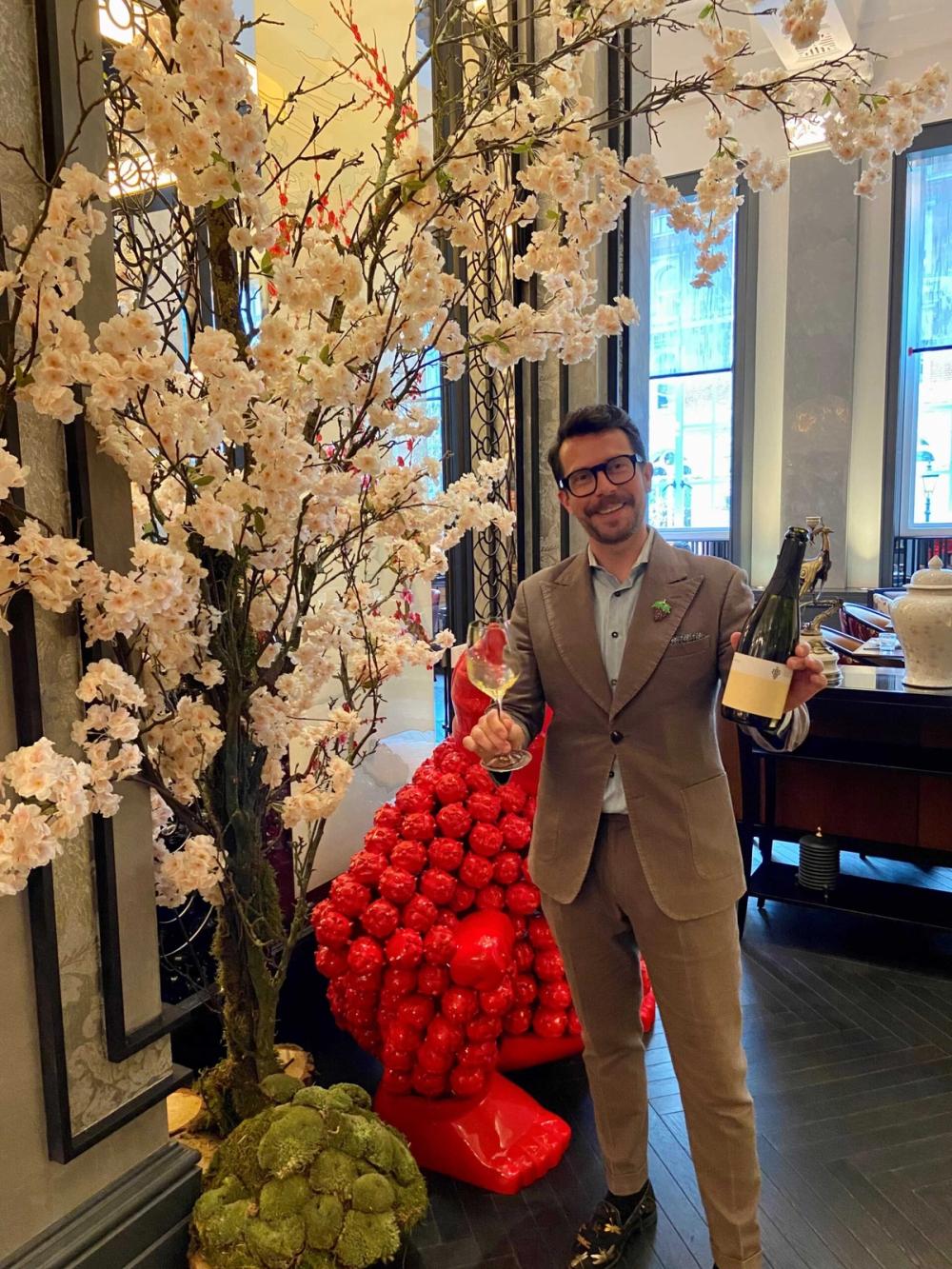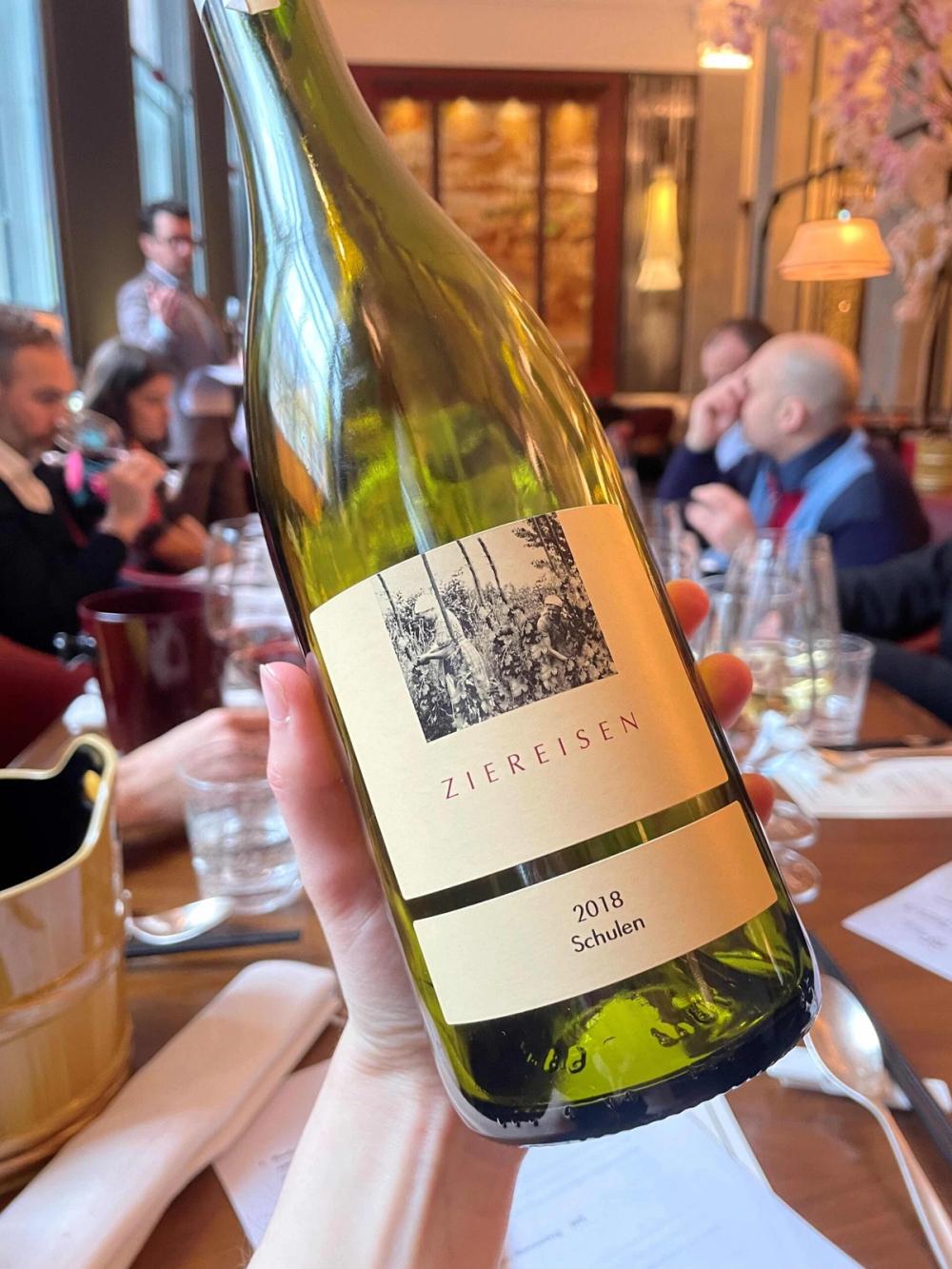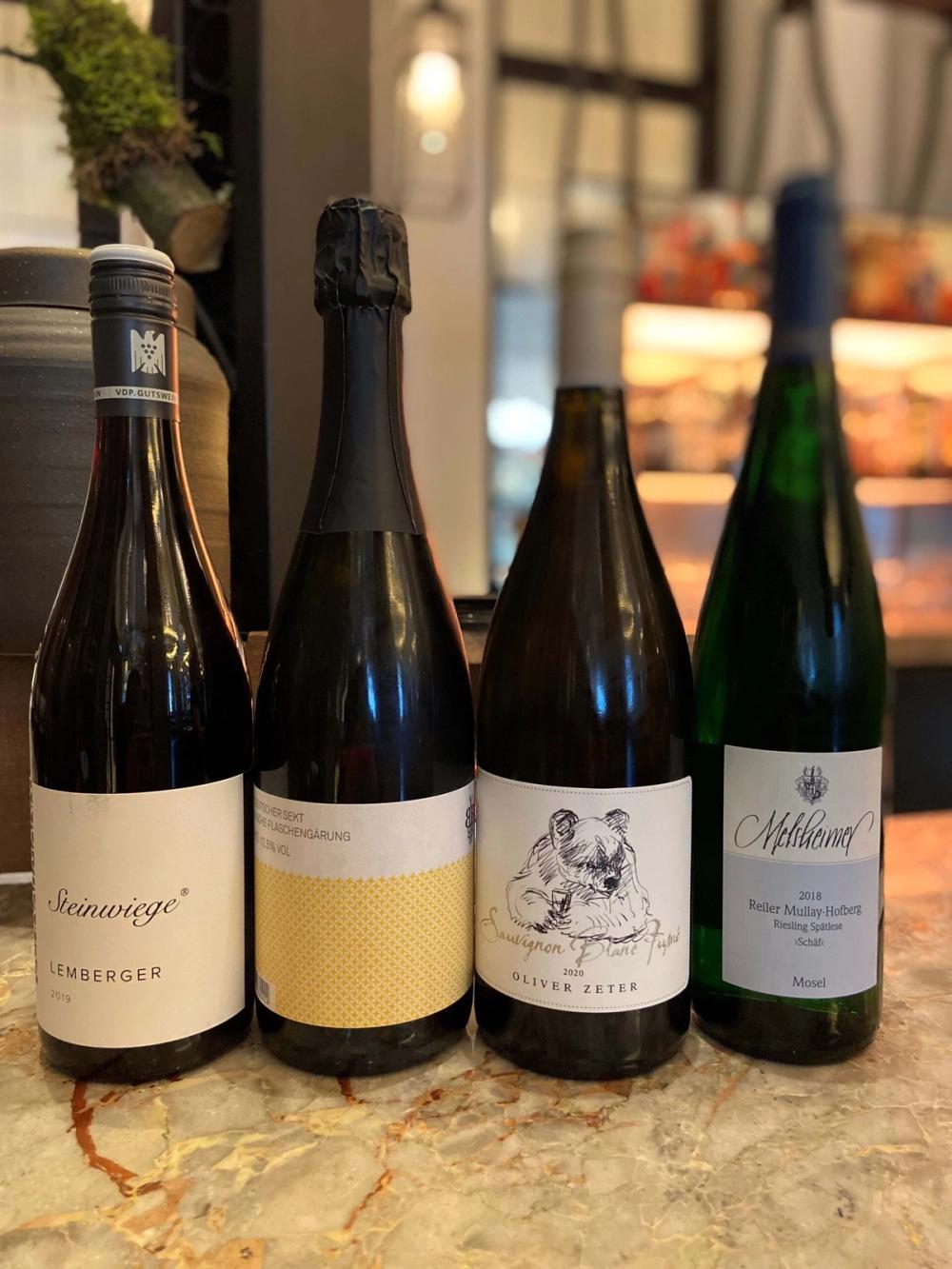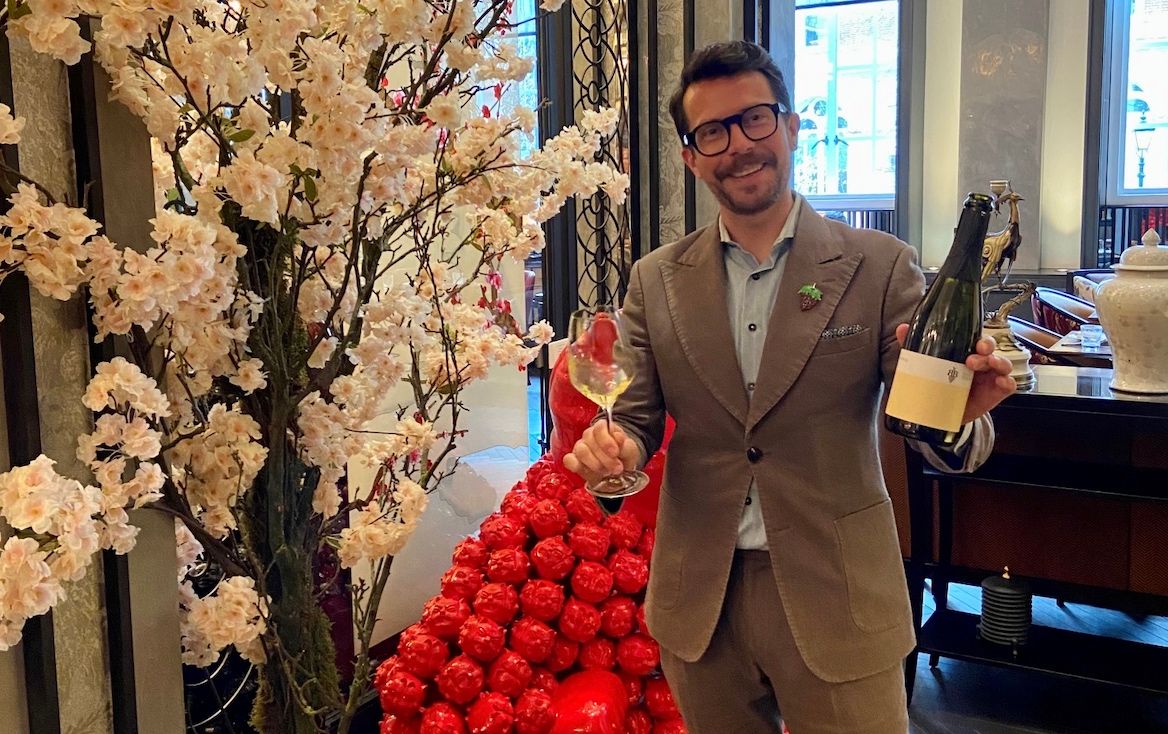This is a report from the first in a series of #SommSessions with the second taking place on June 6 at The Beeswing, Manchester, between 10am-11.30am. Sommeliers can sign up to take part here.
Arguably, Germany’s biggest calling card when it comes to pairing wine with food is the country’s iconic Riesling grape. In fact, the variety is widely considered to be the most food friendly white wine in the world thanks to its versatility and ability to express a range of styles, from dry to off-dry and sweet, enabling it to match extremely well with a diverse range of cuisines. This may go some way to explaining how it came to be such a pet favourite of so many sommeliers.
But how well can other German wines – as well as Riesling – stand up to some more unusual food pairings? How would a range of wines stand up to duck spring rolls with hoi sin sauce? And is Germany’s version of Pinot Noir, Spätburgunder, a match for char sui buns with char sui sauce?
“With their beautiful structure, German wines have a wonderful affinity to food,” says Wines of Germany’s director Nicky Forrest. “Lifted acid profiles and accessible fruit make them versatile choices for less usual dishes. Ten years ago, I used to say that you could tell if a restaurant was a good one by looking at its selection of German Rieslings. Now things have moved along considerably and German Riesling is widespread in the premium on trade. Nowadays, I always say that the marker of a great restaurant is whether or not it has a good selection of German Pinot on the list.”

The premium Chinese and Japanese restaurant, Mei Ume, was the impressive host for the first SommSession
So to show that it’s possible to break all the so-called rules when it comes to matching food and wine with positive – and surprising – results, Wines of Germany recently held a tasting session to test the theory with a select group of sommeliers at the Mei Ume restaurant in London’s Four Seasons Hotel which specialises in traditional Chinese and Japanese dishes – with a modern slant.
On a wet and blustery morning, a selection of German wines including a Sekt,a Sauvignon Blanc, a Riesling, a Pinot Noir and a Lemberger were pitched against the robust flavours presented by a range of Cantonese and Japanese cuisine, with interesting results.
Put to the test
Hosted by top sommelier and wine consultant, Jan Konetzki, the session was attended by a number of leading industry professionals, including representatives from Hawksmoor, Fenn Restaurant, Noble Rot, TAO / Hakkasan Group, Planque Restaurant, Diogenes the Dog, The Birleys Clubs, HUMO and 67 Pall Mall.

Leading sommelier Jan Konetzki is the host of the SommSessions series with Wines of Germany
The tasting kicked off with a 2019 Deutscher Sekt from Andreas Bender, a Mosel producer who made his first wine at the tender age of 13, and now has vineyards across the heart of the Mosel Valley. Supplied by Indigo Wines and made in the traditional Champenoise method with 12.5% abv, Konetzki described the sparkling wine, a Brut Sekt made from 100% Riesling grapes, as “a classic example of the genre from the Mosel, made from all-natural organic yeast. With only 5% residual sugar, it’s crisp with a great finish, with hints of something tropical, and some lime and sherbet on the palate”.
While he thought the Sekt worked exceptionally well as a refresher between the dishes, he said it also made a great partner with the seaweed salad as well as the miso soup.
The key flavours in Japanese food, according to Konetzki and apparent in the miso soup and seaweed salad on the menu, are saltiness, impacted by the sea, and fish. “People often only think about sushi when they consider Japanese food, but there are other flavours like umami which we are going to focus on today,” he said.
With three different types of dim sum, plus char sui and prawn toast, Canton cuisine and its sweet and sour flavour profile represented a tough challenge for the wines, with Konetzki pointing out that often it is the condiments in Chinese food such as soy sauce and chilli sauce that turn out to be the most difficult to successfully team with wine. However, whilst thesesame toast turned out to be a particularly tough dish to team well with the wines, with the competing flavours of sesame, fried food and fish all presenting different demands on the wine, Konetzki rose to the challenge, pairing a Sekt. “And when you throw in the sweet and sour sauce, that is naturally Riesling or Spätlese territory, but here I think the Sekt works well,” said Konetzki.
Surprising pairings

The challenge for Jan Konetzki was to pair a selection of German wines with Mei Ume’s Asian cuisine
But the biggest surprise of the morning, and one that won over many of the sommeliers with its ability to stand up to the robust Asian flavours on the menu, was the second wine in the tasting line up. A barrel-fermented Sauvignon Blanc from Oliver Zeter, a producer in the Pfalz region who started making the wine back in 2007, was described as a “marmite” grape by Konetzki, with many disliking the distinct gooseberry and boxwood aromas and flavours so typical of the varietal.
However, this was one iteration that won over even the most staunch critics of the grape.
With a richness and body often lacking in the grape, Konetzki said: “The great discovery of the day for me was the Sauvignon Blanc which showed itself as a great match with several flavours, with a punchy aromatic herbal nose, but a fresh yet softly textured palate. This is definitely a wine that doesn’t ask if it can enter the club. It just announces itself – I love this grape again!”
He described it as having “tropical fruit flavours, a little bit smokey and with some contact. There is lots of zestiness here, with hints of grapefruit and gooseberry. It’s got a lot of texture and a crispness at the same time,” adding that he appreciated its versatility with food. Initially he thought it would match well with the chilli oil, but after tasting the wine with the dishes, revised his opinion and pronounced it a “great all-rounder”.
The next wine up for tasting was a return to the Mosel with a 2018 Riesling Reiler Mullay-Hofberg Schaf Spatlese from the Thorsten Melsheimer estate produced with fruit from its Reiler Mullay-Hofberg organic vineyard, which rises steeply above the Moselle River. Supplied by Newcomer Wines, Konetzki described the wine as “on the sweeter side, but very fresh, layered with a minerally Mosel slatiness, with signature strawberry notes, along with some peaches and melon. There’s a crisp acidity on the one part and a generous 29g of residual sugar on the other. This is old school winemaking. If I had to sum it up in one word, it would be juicy.”
Matching sweetness

The Riesling wines showed how well the classic German variety can pair with Asian and Cantonese cuisine
One of the most challenging aspects of matching wine to Cantonese food, said Kontetzki, is the sweetness of many of the dishes. But the Riesling was more than up to the job of not only standing up to, but also complementing the rich, sweet hoi sin and sweet chilli sauce in the dishes. It was certainly a hit with the assembled sommeliers, who felt the sweetness of the food whether that was from a pinch of sugar, or the natural caramelisation process during cooking, was perfectly offset and complimented by the naturally off-dry wine. And at only 8% abv, the wine will appeal to the increasing number of drinkers who are looking for lower alcohol drinks, added Konetzki.
The first of the red wines in the morning’s line up was a Pinot Noir from Weingut Ziereisen, Baden, with an abv of 12.5% and supplied by Howard Ripley. Germany’s Spätburgunder, or Pinot Noirs, produced in a cooler climate have the ability to be lighter and lower in tannins than other red wines, and traditionally team well with ham, salmon or duck.
But how did it stand up to the powerful flavours from the Mei Ume kitchen? Konetzki described the Pinot Noir as “very untypical in style” adding that usually, Pinot Noir from the region is “super fruity, and super rich, but this is a very cool and rather subtle style of Pinot Noir, more Burgundian in style than the spicier style you usually find in Baden.
“This has a lot of black cherry and raspberry flavours as well as a bit of chocolate and is quite light in body. It also has a very good length and is quite an elegant style which I think works well with the duck rolls and the dim sum.”

He added that red and sparkling German wines are those that represent the greatest untapped opportunities for the UK trade. “You find great value and a lot of unexpected gems” he said.
Matching reds
Completing the tasting session was a 2019 Lemberger, Steinwiege from the Schnaitmann winery in Germany’s premier red wine region, Württemberg, where almost three quarters of wine production is red, and predominantly made with Trollinger, Schwarzriesling or Lemberger (also known as Blaufrankisch) grapes. Typically, these reds tend to be light and fruity, due to the cool temperatures predominant in the region, though more winemakers are starting to make higher alcohol, more heavily extracted styles. And at 13% abv, the Schnaitmann version tasted was no exception to this. Aged for 15 months in oak barrels, and bottled unfiltered and without sulphur addition, Konetzki said he selected the Schnaitmann Lemberger for its “syrah-esque expressions, with their sour cherries, red vines and plum cake notes.”

Limburger is a classic style of wine to pair with food as it is “super food friendly” said Konetzki
Often overlooked, Lemberger, said Konetzki, is “a fantastic variety, super food friendly with all the aromatics we love.” He thought it paired exceptionally well with the “extreme flavour and sweetness and saltiness” of the chilli oil which is a particularly challenging condiment to match with wine.
Soy sauce too is another commonly used ingredient in Asian food which Konetzki said can prove particularly challenging. “Wine reacts strongly with soy sauce, which itself is fermented from soy beans,” he explained.
Summing up the session, Konetzki said: “Our tasting of German wine and classic Asian flavours reminded us all about the food-friendliness of the wines. Great surprises were the less well-known German wines from grapes like Sauvignon Blanc and Lemberger.”
The wines

The line up of wines tasted included this selection of classic German wines…
1 Riesling Brut, Deutscher Sekt, Andrewas Bender, Mosel, ABV 12.5%. Supplied by Indigo Wines
2 Sauvignon Blanc Fume, Oliver Zeter, Pfalz, ABV 13%. Supplied by Delibo through Carson & Co
3 Riesling, Reiler Mullay-Hofberg, Schaf Spatlese, Thorseten Melsheimer, Mosel, ABV 13%. Supplied by Newcomer Wines
4 Pinot Noir, Schulen, Weingut Ziereisen, Baden ABV 12.5%. Supplied by Howard Ripley
5 Lemberger, Steinwiege, Schnaitmann, Wurttemberg, ABV 13%
The Menu
Miso Soup, Seaweed Salad with Sesame Vinaigrette,
Char Siu Bun with Char Siu Sauce Filling
Steamed Dim Sum Selection: Har Gau, Char Siu, Mushrooms, Black Vinegar, Chilli Oil
Sesame and Prawn Toast with Sweet Chilli Sauce
Duck Rolls with Hoi Sin Sauce.
- The second in the series of #SommSessions takes place on June 6 at The Beeswing, Manchester, between 10am-11.30am. Sommeliers can sign up to take part here. Sommeliers can sign up to take part here.
































